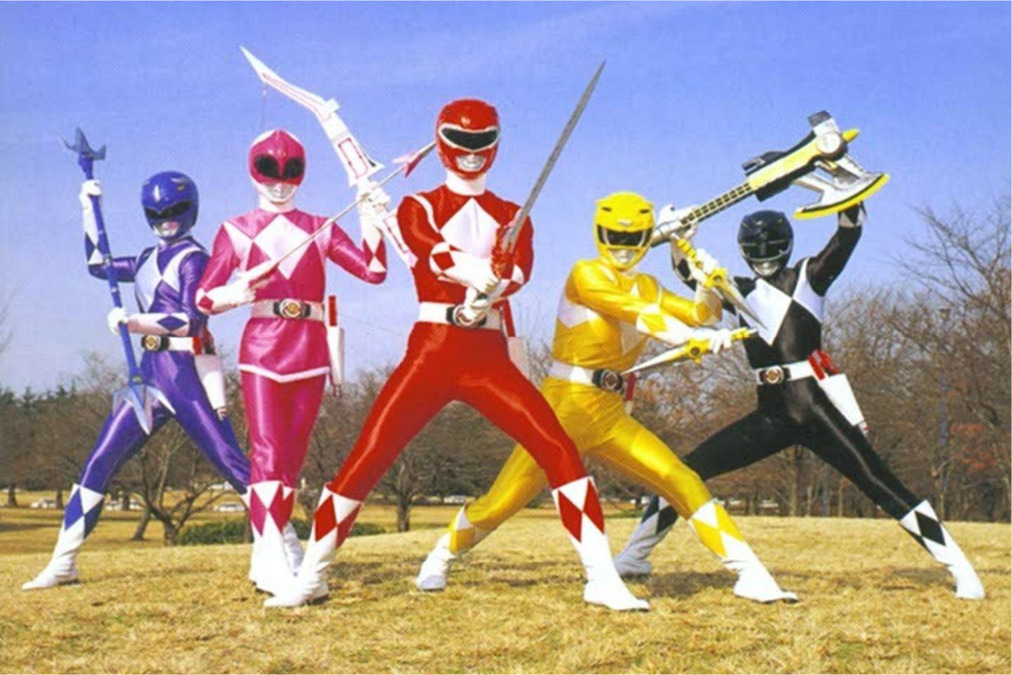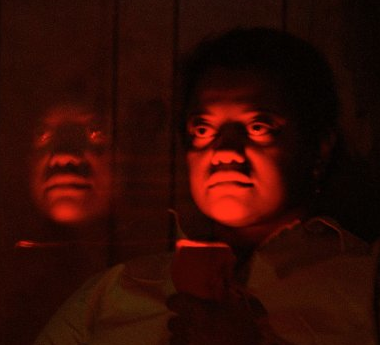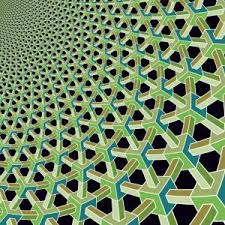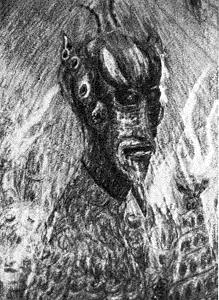
The hottest media meme/kiddie-toy infection of the mid-1990s
My television sits about three yards away from my computer, and every hour or so during writing bouts I wax up my remote control and catch a couple waves. A few months ago, getting bored with shitty videos, yapping Headline News heads, and the parade of thick and seething folks spilling their guts on Maury and Sally Jesse, I began leavening the mix with solid doses of kid’s TV. What initially caught my eye were the insane ads: Kids morph into shiny balls of mercury that roll across basketball courts; aliens swap their flying saucers for “Blade Runner” roller blades; kids get really stoked about our big blue marble becoming McWorld; kitty-cat dolls meow and flop their paws like furry robots. Some of the shows are cool too.
I used to think of kid’s programming as another world, but now I realized that the realm’s brazen cartoon marketing and viral punch are just a futuristic, funhouse mirror of the larger mediaverse we all swim in. It’s in that mirror, particularly in the ads and promos, that media tech most aggressively grabs the eye, thus hinting at the merchandise-driven virtual reality just over the horizon. Sometimes this unnerves me. Nothing moralistic, mind you–I have no children to worry about or buy toys for, and I’m a card-carrying member of the Acme Uncivil Liberties Union, which has tirelessly defended the right of cartoon characters to destroy each other in as creative a fashion as possible. But still, if you wanted to mount the argument that afternoon television is breeding an army of insatiable kick-boxing schizo-consumers, the ammo is there. It’s called Mighty Morphin Power Rangers, and it’s the latest kiddie-pop phenomenon to fire up whatever mysterious glands have already driven millions to worship Ninja Turtles, Hollywood dinosaurs and Cabbage Patch Dolls. The No. 1 kid show only five weeks after it first debuted on Fox, the half-hour, live-action series now earns a gargantuan 40-share among 2- to 11-year-olds. That’s BIG.
The Power Rangers are a team of clean-cut, racially mixed American teens who live in an everysuburb named Angel Grove and devote themselves to cheerleading try-outs, karate practice and talent shows. The two girls who play Kimberly and Trini are lithe, the buff dudes who play Billy, Jason, and Zach have necks as wide as their skulls (though Billy, who wears glasses, is real smart!). In every episode, a horned witch named Rita Repulsa attempts to either destroy or conquer the earth with her poofy Evil Space Aliens. The benevolent disembodied being Zordon, who resembles Day Akroyd in a fishbowl, summons these “teenagers with attitude” to his hidden command center, where they whip out their Power Coins and “morph” into the Rangers, masked kung fu heros in spandex.
To judge from the grainy film stock that immediately follows, morphing seems to transport the team into another realm. When the Rangers start attacking Rita’s lumbering, foamy bad guys–leaping, kicking, punching and wielding swords, sparks flying all the while–you may notice that vaguely Space: 1999 beehive apartment buildings have appeared in the distance, like nothing you’ve ever seen in the good ole U.S. of A. What’s more, when Rita screams things like “I’ll get you Power Rangers!” her lips don’t match the words. The crayon-colored Rangers look different too–though morphing would presumably make them more powerful, their beefy muscles (and breasts) have shriveled. Then it hits you: you’re watching a different show.
As it turns out, most of the Power Rangers action footage is lifted straight from a Japanese show called Zyu Rangers, which features Japanese kids who morph into superheroes when evil space aliens threaten Earth. Because the Zyu Rangers are masked when they’re in combat, a famously hack producer named Haim Saban realized how easy it would be to replace the original “civilians” with American teens filmed in some California suburb. Saban must have figured that American tykes wouldn’t root for Japanese kids, though Fox has claimed that dubbing was the real stumbling block. For some reason, they had no problem with the evil Rita Repulsa remaining both dubbed and Asian.
Zyu Rangers is only one of a long-lived (and, according to one fan mag, “stagnant”) genre of live-action sentai (translation: superhero team) shows that include Fiveman, Changeman, Dai Ranger, and Birdman Task Force Jetman. In these programs, a bunch of goofy kids (usually five) are called on to become superheros and save the universe, which they do inevitably by unifying into one collective monster-fighting entity–often but not exclusively a robot.
In fact, the shows are so interchangeable that the following fall season, due to a lack of fresh Zyu Rangers footage, new Power Rangers episodes cribbed their action scenes from Dai Rangers, and entirely different
sentai show. (This switch-over necessitated only the most minor cast revision–Hello, White Ranger!) At the same time, producer Saban rolled out the Power Rangers spin-off VR Troopers. Though consisting of more of the same robotic heroics, Troopers also involves “virtual reality” and also features an exciting Saban innovation: it reportedly rips off two Japanese shows, Spielvan and Metaldar.
***
The Power Rangers routine goes like this: the Rangers kick-box whatever foamy monster Rita has thrown their way until she tosses her magic wand-ICBM and screams “Make the monster grow!”–at which point her monster grows into a colossus. So then the Power Rangers invoke their own big robots/vehicles/weapons/toys: the Dinozords, which include a Triceratops, a Pterodactyl, and a most undinosaurlike Sabertoothed Tiger. Each Ranger then leaps up into the cockpit located in his or her personal Dinozord’s skulls. But the Dinozords can also combine Transformer-like into one collective, hulking, Power Sword-wielding Megazord when the situation demands it–which it does, day after day after day.
Initially, even hardcore camp aesthetes may find Mighty Morphin Power Rangers‘ particular flavor of cheese difficult to get down. But after watching the show as it was designed to be watched–day after day after day–what I previously saw as tacky fodder grew into a rich aesthetic vision. The discontinuous and repetitive Japanese fight scenes are so hyperstylized they play like postmodern acrobatics, while the shots of samurai robots smashing up toy cities are so low-budget they give off a dreamy, childhood glow. Even the hack frisson of the American-Japanese cultural splice makes the series crackle with a frazzled, unintentionally avant-garde buzz.
Perhaps the show itself is the true monster, a media mutant concocted by a bleary-eyed Saban in some smelly basement lab in Burbank. An Egyptian-born former Israeli concert promoter, Saban and his partner Shuki Levy spent years toiling away at cartoon theme songs and low-budget animation for global distribution. Saban’s also responsible for some Shannen Doherty exploitation fare, as well as the death-culture TV masterpiece To Catch a Killer, which featured Brian Dennehy’s chilling portrayal of John Wayne Gacy. Now Saban has a gold-plated Power Ranger in his office.
However degraded or nonexistent Saban’s commitment to kiddie culture is, it’s thoroughly satisfying to know that his hacking prowess has infected millions of little American minds with an unabashedly Japanese popular aesthetic. Infected too loaded a verb for you? Check it out: besides the monstrous ratings, over 3 million Power Rangers home videos have been sold, a contest to meet the “real” Power Rangers netted over a half-million mail entries, the Rangers outdrew Santa Claus in a San Fernando Valley shopping mall, and a live appearance at Universal Studios caused an eight-mile traffic jam in L.A. A film, a CD-ROM, a theme park, even a chain of martial arts studios may be on the way.
Power Rangers is cheap to make, but Saban’s tastiest pie is licensing and merchandising. Mediaweek quotes industry estimates that the Rangers has grossed $35 million to $50 million in merchandising since Christmas. Far outselling the T-shirts, masks, coloring books, balloons, bedsheets are the action figures; millions and millions of Mammoth Dinozords and Battle Bikes and Red Rangers and Wor the Shuttlezords have been sold. Parents mobbed and bribed and bartered for toys, hunkered down in overnight lines and swapped rumors of shipping routes. Truck drivers entering Toys-R-Us lots were greeted by hoards of obsessed Moms and angry Dads badgering them about their cargo. When I spoke to Bandai, the toy licensee had just opened their 16th 24-hour-a-day manufacturing outlet. As the rep put it, the company was pleased because their new facility was in northern Mexico instead of the “Orient,” so instead of slow ships or costly “air-lifts,” the company had only a week turn-around time.
When she told me this, a vision appeared before me: hundreds of impoverished, overworked and sickly Asian women sweating for dollars a day over high-speed Bandai assembly lines. It’s like the famous I Love Lucy candy factory scene, except no one’s laughing. At the end of the conveyor belt, the assembled Power Ranger action figures awake, give each other high fives, and take off into the tropical blue. Then, to the tune of the Power Ranger’s pop metal theme song, they soar across the Pacific and into the awaiting arms of millions of
happy kids cavorting on well-trimmed green lawns.
In the wake of the vision, I recalled one of the principle henchmen in Rita’s off-world lair: Finster, a bespectacled monster in blue overalls who designs and molds new monsters for his evil mistress. Besides self-consciously weaving narratives around commodities, the media machine behind Power Rangers cannot help but go a step further, and unconsciously tell the tale of its own ceaseless demiurgic production.
***
The Power Rangers is a powerful meme. A meme, the cultural equivalent of a gene, competes in an environment of other memes, survives selection pressures, and propagates itself through hosts. As a mental virus, it need not be rational, or even sensible. Common example are Marxism and God, but as Jurassic Park and Batman made abundantly clear, the media meme can be optimally engineered.
So why should we open ourselves to a market-driven kid meme like the Power Rangers? Because kid memes are just cartoony knock-offs of the more insidious memes designed and pushed by global media conglomerates, and hence they might help us inoculate ourselves against our own invisible infections. And when kid memes do catch, they offer a window onto the minds and desires of a generation so young that in many ways it remains alien to us.
The first glimpse we get is a little depressing. Lacking even the “hey dude” edge of the Teenage Mutant Ninja Turtles, the American Power Rangers have all the flavor of camp counselors. They bond. They go “Yesss!” and “We don’t need a trophy to prove we’re winners!” It’s not all bad; longhaired Tommy, the mysterious Green Ranger who commands his own drill-bit-tailed Dragonzord, retains a touch of the outsider, and the girls Kimberly and Trini are both tough cookies. But these kids’ minds are so bland you wish they picked up some Orientalist mysticism along with all those karate chops.
But when they morph, the American team doesn’t just don costumes, they mutate their core identities. The rough transition and lack of continuity between the Japanese and American footage is not so much a sign of Saban’s bargain-basement editing but of a dream-like and monstrous scrambling of cultural codes. Our Wonder Bread heroes are not just turning Japanese, they’re becoming altered beings in a parallel aesthetic realm, with its own internal logic, myths, and ethics. And maybe their audience is somehow transforming too.
Of course, American kids have long enjoyed dollops of Japanese pop culture: AstroBoy, Speed Racer, Ultraman, Transformers, and the grand-daddy of them all, Godzilla. But the Power Rangers craze currently dwarfs these fandoms. The tykes currently addicted to the show may end up opening up a mass market for more mature and vital Japanese popular arts now restricted to America’s hipster subculture (anime and manga, principally). But they’re also the grand-children of the men who dropped the atomic bomb that contributed heavily to the anxieties that fuel Japanese monster media in the first place. Not to mention that they’re almost certainly watching their heroes on Japanese TVs. Nothing is innocent here.
Unfortunately, the show itself represses its own cultural origins–no information about Zyu Rangers is listed in the credits, and the only Asian face we see besides the evil Rita and a few of her cohorts is the Ranger Trini. But as Pete Girardi, a Japanese toy freak I know, put it, “No matter how much they try to make it a normal American show, you turn off the TV going: ‘That was totally weird.'” That is, besides condemning Saban’s racist erasure of Asian talent, we must pay attention to what bizarre cultural exchanges are still occurring beneath the (masked) surface. Look at the monsters, the robots, the martial art.
***
With her shrill cackle and satanic horns, Rita is pure dragon lady. But most of her foamy and lumbering monsters look less like devils than refugees from Ronald McDonald Land. There’s the lion creature with a talking goat head strapped to its chest, the bad-breath monster, the foam pig, and the Rhino Blaster who spits styrofoam rocks out of his belly. These beings are monstrous not only because they don’t make any sense, but because their repulsive qualities are partially composed of goofy cuteness.
When the Power Rangers attack these creatures, they don’t just use their bodies as weapons, but as magical weapons. For centuries, Eastern martial arts have been conceived of as unfolding the body’s own latent “superpowers.” So even when the pre-morphed American Rangers fight Rita’s monsters, the actors–all of whom are fairly adept at karate–do something Chuck Norris doesn’t do but Hong Kong hero Jackie Chan does: they fly through the air, for flying is a metaphor for the transformed body. That’s one reason the Ranger’s combat is so stylized–such magic is cultivated through patterned repetition more than spontaneous force. The intensely kinetic choreography of the Ranger’s violence, as well as the show’s own repetitive structure, is not just theater. It’s ritual.
Even more subtly, the low-budget quality of the Dinozord and Megazord special effects is a ritualized repetition of the Japanese tradition established decades ago by Godzilla. “Sentai shows are not a matter of trying to be high-tech,” says Girardi. “They’re about sticking to a definite aesthetic. The monsters always approach this one level of reality.” Unlike America’s reigning media ideology, which holds that “good” effects–like Terminator 2‘s morphing–are simulacra dependent on the latest technological developments, the Power Rangers present an old-fashioned, tacky futurism that is sufficient unto itself. In the Power Rangers, SF simulation and the obsolescence of a classical tradition combine. The high-tech robots are
dinosaurs. There’s future-primitive for you.
But when the Dinozords link together to form the Megazord (and when the Dragonzord and Titanus are around, the even more multi-faceted being known as the Ultrazord), we encounter a far more “alien” Japanese figure–the corporate entity. Throughout the sentai genre, the team always achieves its ultimate power by fusing into a being that is larger than the sum of its parts. But we err in reading these powerful hive-minds as symptoms of a specifically contemporary Japanese concern about corporate capitalist identity. We need to remember how many different dimensions of contemporary existence–from multinationals to the Internet to artificial life–are organizing themselves along the lines of distributed networks, the decentered beehive entities that Kevin Kelly discusses in Out of Control: The Rise of Neo-Biological Civilization. When we see all the Power Rangers assemble together inside the Megazord’s single cockpit brain, we see an image of the many agents that the Artificial Intelligence pioneer Marvin Minksy claims make up the Society of Mind. And as Kelly points out, to work within a collective consciousness is not only to let yourself become a node in a network, but to let yourself slip out of control.
Of course, parents fear that the violence of the Power Rangers is what’s out of control. The Los Angeles Times reported one Child Development study that compared playground antics between groups of kids who did and did not just watch an episode of Power Rangers, and concluded that the series “transmits specific forms of violence.” Apparently, the watchers were six times more aggressive. One of the problems with such studies is that Japan does not have the problems of teen violence the U.S., which indicates that the show may just catalyze forces generated outside the media. More subtly, the study does not wonder what else is “transmitted” through these forms of violence–for unlike the gunplay of westerns or cop shows, martial arts prowess implies an entire ethical regimen of self-discipline which may carry far more noble memes than appear at first glance. Maybe some of those playground brutes will wind up Taoists.
Far more incredible than parental fears is the Power Ranger’s attempt to elide them. When an episode’s over, Fox sometimes runs spots that attempt to unambiguously distinguish reality from the TV show. In one spot, Kimberly and Billy, the Pink and Blue Ranger respectively, proclaim an “Emergency Reality Check System” and attempt to draw a big fat line between the “fantasy” of the Power Rangers violence and the “reality” that punches hurt. In another spot, a couple of tykes put on Power Ranger masks and beat up on a kid who took their ball. When two “real” Power Rangers appear, the kids cover their asses by blubbering “we’re just doing what the Power Rangers would do.” Then the “real” Power Rangers explain that though the monsters they fight are obviously bad because it’s a TV show, when the tykes beat up their playmate, it isn’t TV, “It’s real life.”
No, it’s not. It’s TV desperately trying to distinguish itself from a real life it can only artificially represent. And we’re in deep shit when it’s TV that takes up the burden of making this distinction. My concern is that some innocent tykes out there are going to watch one of these spots and fall into a deep, schizoid fugue state: “real TV, TV about real TV, real fantasy TV, fantasy reality…” They’re the ones I’m worried about, for they may never emerge.




